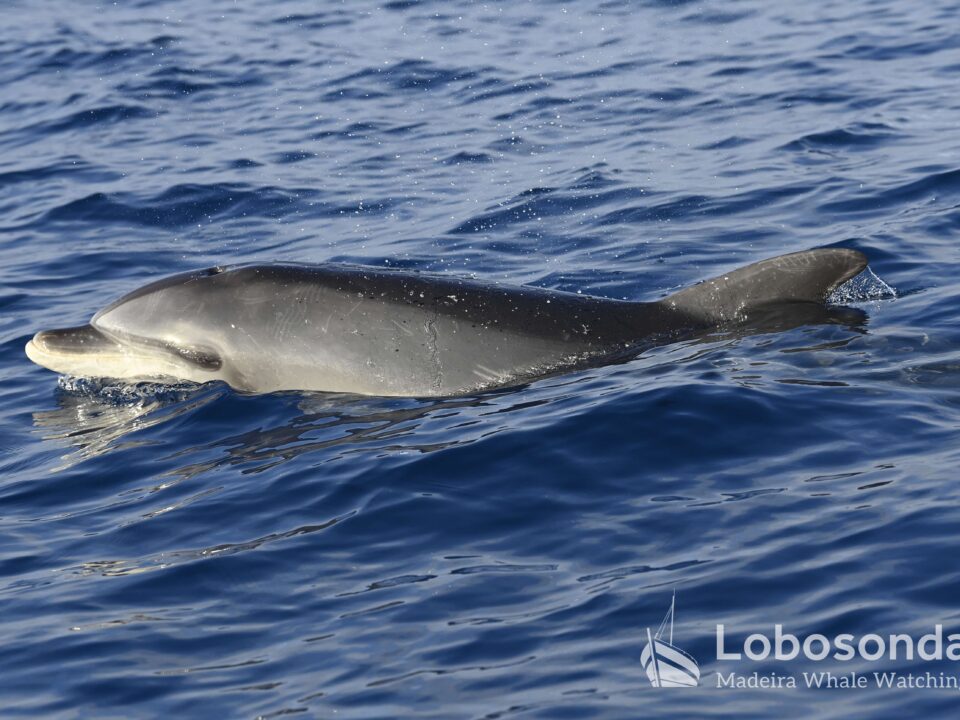
11.05.2023 – Our Stenellas
May 18, 2023
13.05.2023 – Careful assessment
May 20, 2023Dolphins come in a wide variety of shapes and colors. Today we had a total of three different types of dolphins. In the morning we were joined by Atlantic spotted dolphins (Stenella frontalis) who took pleasure in doing their best to show off. These little dolphins are light gray with a white belly. Their body colour changes throughout their lives. More and more spots appear on the skin of adult animals with age. In the morning one of the dolphins did some great leaps right in front of our traditional fishing boat. It was a very beautiful, close encounter with our smallest dolphin friends. On the way back we spotted a Loggerhead turtle (Caretta caretta) hanging out near a plastic canister. We fished the container out of the sea.
At noon we encountered a group of Short-beaked common dolphins (Delphinus delphis), but they showed no interest in us. This type of dolphin has a very special pattern. A black saddle on the upper back and on the sides, the colors run from a slightly yellowish tone into grey. This drawing is called an hourglass drawing. The subsequent sighting of Short-finned pilot whales (Globicephala macrorhynchus) was very special. Three animals, an adult, a juvenile and a calf “dance” in front of the Ribeira Brava’s bow. Again and again they drew their ancestors from right to left, from left to right. I have never experienced such an intensive interaction with the boat. Pilot whales, which are also dolphins, look very different from the classic image of a dolphin. Its beak is very short, barely visible, and its head is rounded. Their body color is dark grey, almost black. A large school of Atlantic spotted dolphins were also seen in large numbers.
Our friends in the blue office come in a wide variety of colors and shapes. Everyone is very welcome here.
By Fatima Kutzschbach
Sightings of the day
Ribeira Brava
09:30 Atlantic spotted dolphins, Loggerhead turtle
13:30 Common dolphins, Pilot whales, Atlantic spotted dolphins
Stenella
09:30 Atlantic spotted dolphins, Loggerhead turtle



























